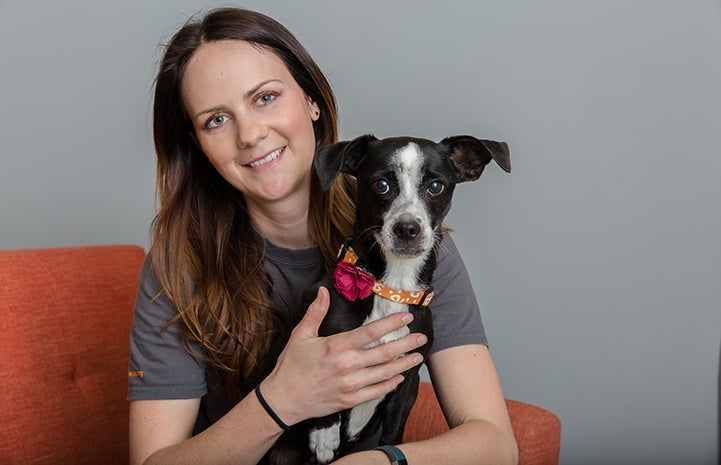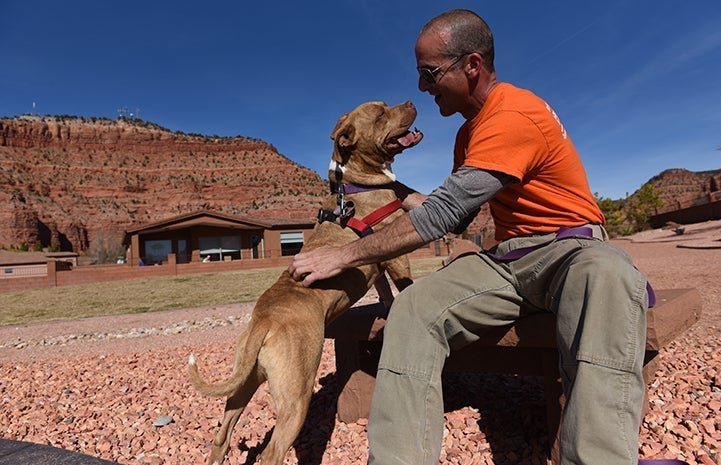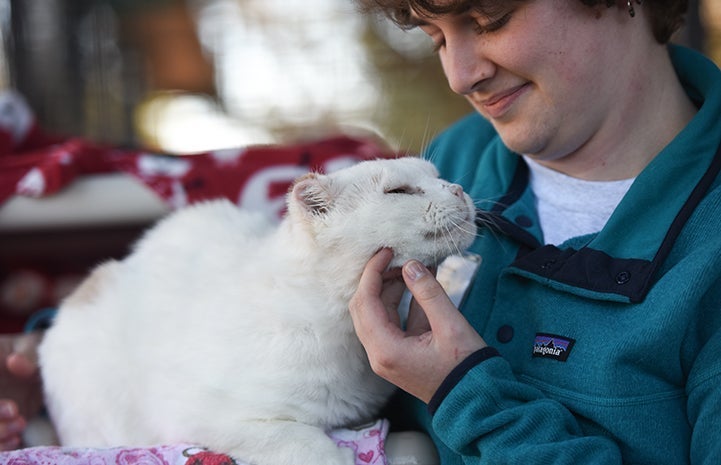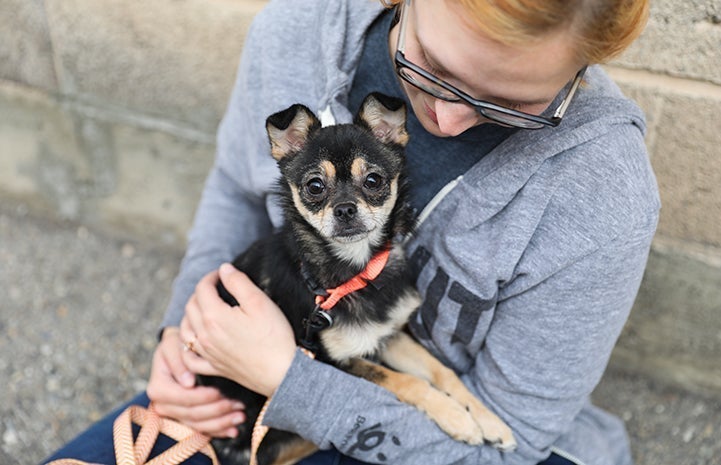
Animal Caretaker Burnout
Elaine Johnson-Craig could easily be mistaken for Superwoman, minus the cape. As a member of the board of the Roice-Hurst Humane Society, a small, private nonprofit animal shelter in Clifton, Colorado, Johnson-Craig wears many hats: fundraiser, event organizer, dog and cat wrangler at adoption fairs, public speaker, animal transporter, chief bottle washer, you name it. No job is too big or too small for Johnson-Craig to take on.
Animal caretaker working conditions
It was shortly after she stepped into the president’s role at the shelter that the stress began to take its toll. Although she had run her own successful business for almost 20 years, it hadn’t prepared her for the commitment of time and energy she was now devoting to a very emotionally charged cause.
All of a sudden, she stopped, or severely limited, the things that used to bring her joy and helped relieve her stress — reading, sports, lunches with friends, even spending time with her own pets — because there just wasn’t any time left over. “The shelter and the animals always came first,” Johnson-Craig says.
It wasn’t long before she hit a wall.
“I was irritable, judgmental and critical of others, and up and down emotionally,” she says. “People would comment that I looked tired and didn’t look like I was having much fun."
Johnson-Craig would later find out that what she was experiencing was burnout. And she was far from alone.
A rollercoaster of emotions
Those who dedicate themselves to saving animals experience a wide range of emotions on any given day. Seeing an animal find a loving forever home can bring elation one moment; seeing an abused, lost and frightened animal in a shelter or disaster zone can bring heartbreak the next.

Saving and caring for animals doesn’t stop when the clock strikes five. And that’s one reason animal welfare work can be so emotionally exhausting, making caregivers and rescuers more prone to burnout.
“Loving animals is 24 hours a day, seven days a week. It’s always foremost in the animal lover and rescuer’s mind,” says Linda Harper, a clinical psychologist in private practice in the Chicago area and author of two books, including "Give to Your Heart’s Content Without Giving Yourself Away." Harper and Best Friends co-founder Faith Maloney present an annual three-day Giving Heart Retreat at Best Friends Animal Sanctuary to help caregivers and rescuers learn to manage the stress and burnout that comes with animal rescue. They also present a workshop titled “When Hearts Are Larger Than Hands: How Not to Get in Over Your Head” at Best Friends’ annual No More Homeless Pets Conference.
No matter how many animals a caregiver or rescuer has saved, so many more are in need of help. Where animal lovers get into trouble is in thinking that they alone can save every single one of them. “While animal welfare has made great progress in improving the plight of our furry friends, there are always more to help,” Harper says. “When we continue to just follow our hearts, we are unable to say no. We get ourselves in emotional trouble when we are unable to set limits. So, we inevitably become overextended and overwhelmed. We take on more than we can comfortably handle — individually and as organizations as well.”
That’s what put Jill Boyle, a volunteer and board member with the Richmond Animal League in Virginia, on the road to burnout. “A few years ago, I wanted to do everything and save them all,” says Boyle, who also works with Metro Richmond Pet Savers, a coalition of animal rescues and municipal shelters whose common goal is to reduce euthanasia rates in Richmond shelters. “I read every email I received and was heartbroken when we couldn’t save each and every one of the precious fur kids. I spread myself way too thin.”
Harper describes burnout as “physical, mental and emotional depletion.” “We sacrifice self-care, which makes us vulnerable to anxiety and depression and more prone to physical illness,” she says. Other symptoms of burnout include headaches, stomachaches, trouble sleeping, irritability and an increase in negative behaviors such as drinking, smoking, overeating and gambling.
Boyle attended Harper and Maloney’s Giving Heart Retreat at the Sanctuary in May 2009; she and her fellow workshop attendees learned valuable skills to help them avoid future burnout. They learned how to focus on their successes and what they could do rather than what they were unable to do. They learned the importance of self-care and of reaching out to others for support.
Home starts with you
“To avoid burnout, we need to commit to self-care,” Harper says. “We need to look deeply into who we are and recognize and honor our strengths and limitations. We need to meet our own needs so that we can continue to help animals with joy and fulfillment rather than depletion. Taking care of ourselves is what’s going to allow us to take care of more animals.”
Today, Boyle is still passionately saving animals, and she has learned she can’t do it all alone. What keeps her going? “The animals — their resilience, tolerance and unconditional affection — and also the loving, caring and compassion of people working together,” she says.
Support systems
One of the most stressful jobs in animal welfare is working on the frontlines of an open-admission animal control shelter, which must take in all animals picked up by animal control or dropped off at the shelter. People often take these jobs because they love animals, and they want to save them. “I always wanted to do something that made a difference, that made the world a better place,” says Sara Kyle, who has worked at a shelter in Florida for six years.

Kyle soon realized that shelter work can be emotionally exhausting. “I knew it was going to be hard, but I didn’t realize how hard,” she says. “You want to help all of them.”
Kyle learned early on that she had to concentrate on the positive and not the negative. She thinks about Dolly, a hound mix who was so emaciated when she was dropped off at the shelter that no one thought she’d survive. “She was so sweet,” Kyle says. “Even after everything she’d been through, she still trusted people. She had two puppies in her kennel her first night at the shelter. We bottle-fed the puppies. Today, Dolly is healthy and happy and in a fantastic home.”
Dolly’s puppies also found homes of their own, and Kyle often sees many of her other former charges playing on the beach or enjoying the dog park with their own families. “I still feel I’m able to make a difference,” Kyle says. “I have 65 children I take care of every day.”
Kyle makes sure to take time for herself; otherwise, the shelter would consume her. One of her favorite stress busters is to grab her surfboard and hit the waves. “It’s a totally different world out there,” she says. “You have to get away sometimes.”
Kyle has also found a wonderful support system in her fellow shelter workers. “Once a month, we take a day and go to the beach and set up a tent,” she says. “Each of us brings a dog from the shelter. We’re more than staff members. We’re really like a close-knit family.”
Helping from a distance
For Bob Blumberg, just turning on the news and watching the coverage of the latest tsunami or crisis in the Middle East can bring the memories flooding back, memories he thought he’d safely tucked away in the back corners of his mind.
“I was quite surprised at how draining these memories were, even from many thousands of miles away,” Blumberg says. “I felt like I was standing in the middle of the crisis, and I was completely overwhelmed once again.”
Blumberg spent 20 years as an electrical engineer working on energy-related development projects for the U.S. Agency for International Development. His wife, Andrea, worked for the agency’s senior foreign service. They spent time in a number of developing countries, including India, Indonesia, Egypt, Sri Lanka and the Republic of Georgia. But he found his true calling back in 2002 when he walked into the Egyptian Society of Animal Friends shelter in Cairo.
“I realized animal welfare was why I was sent, and I had some skills — organizing, developing education materials, fundraising — that could be useful,” Blumberg says.
He started to experience burnout about the time he was leaving Cairo for Sri Lanka. “Egypt was not a hospitable place for animals,” Blumberg says. “Small advances in animal welfare happened, but it was a very draining experience.”
To make matters worse, there is a tremendous shortage of animal welfare volunteers in developing countries.
Blumberg thought he’d take a little break from animal welfare when he arrived at his new post in Sri Lanka in 2004. Then along came the tsunami. Local officials were contemplating a mass killing of dogs out of fear of rabies, and Blumberg found himself out in the field helping to vaccinate some 14,000 dogs and put red collars on them to signify to authorities that they were not a rabies danger. Then he helped set up a mass spay/neuter program in Sri Lanka.
Blumberg took Linda Harper’s workshop at the Asia for Animals Conference in Bali in 2008. “Taking the burnout assessment was a real eye-opener,” he says. “We all knew we were experiencing the various symptoms, but that was the first time I’d seen it all placed in a framework that brought all the pieces together. For me, this, and learning that I was not alone in this feeling, was the first big step.”
Blumberg and his wife returned to the states in late 2008, settling in San Diego, California, with their rescued Egyptian dogs, Jamie, Lucy and Maggie. Thanks to the Internet, email and Skype, Blumberg continues to be active in animal welfare. Working with the Tsunami Animal-People Alliance, Blumberg helps support the rescue team on the ground, doing fundraising, administration, monitoring finances, putting together PowerPoint presentations and doing anything else the team needs.

Regular exercise, meditation and attending animal welfare conferences such as Best Friends’ annual No More Homeless Pets Conference help him keep burnout at bay. “Bob does tremendous work from behind the scenes,” Harper says. “He’s doing something that’s really helping.”
Maintaining balance
Johnson-Craig took Harper and Maloney’s Giving Heart Retreat at the Sanctuary in May 2010. Upon returning home, she began reintroducing into her life all the things that used to bring her joy. At home she now limits her conversations about the shelter. When she needs to vent, she has a good friend in animal rescue who’s her sounding board. She recently stepped back from the board presidency and started letting others assume some of the management tasks, which has freed her up to interact more with the animals, both her own and the shelter’s, which she says “is the reason I got into this in the first place.”
“I credit the retreat for helping me relax enough and clear my mind so it would be open to out-of-the-box thinking,” Johnson-Craig says. “Only a couple weeks after I got back from Best Friends, an idea struck my brain like a lightning bolt while driving down the interstate on my way to work. That idea has, a year later, literally saved our organization hundreds of thousands of dollars. When your mind and spirit are full of stress, worry and negativity, it’s difficult to get those positive and creative juices flowing.”
Johnson-Craig calls the Giving Heart Retreat “a Zen experience that changed my life and ultimately the life of the shelter.” One workshop exercise particularly stands out in her mind.
“What helped me most was the ‘letting go’ exercise where we visualized and drew a picture of whatever symbolized our greatest stressor,” she says. “For me, it was a Superwoman cape. We took our pictures outside the cafeteria at Angel Village and held a ceremony on the terrace. We each dug a hole, burned our picture and buried the ashes. Some of us stomped on them for good measure. Now, when I fall back into the trap of thinking I have to do everything — and that I’m the only one who can do it right — I try to remember that I burned and buried that cape forever.”
Symptoms of burnout
- Anxiety
- Depression
- Emotional exhaustion
- Feelings of ineffectiveness and negativity
- Headaches and stomachaches
- Trouble sleeping
- Unexplained aches and pains
- Irritability
- Anger
- Negative thinking
- Feeling no pleasure in life

Ways to avoid or bounce back from burnout
- Practice self-nurturing every day.
- Be proud of what you do.
- Set realistic limits.
- Discipline yourself to say no.
- Have other resources and referrals handy when you receive requests.
- Understand your strengths and weaknesses, and know how you are best able to help — and limit yourself to helping in that way.
- Focus on the positive.
- Eat well and get enough sleep.
- Put some time in between a demand and your response. Ask yourself: “Is this really something I can do right now?”
- Make time to play.
- Let go of thinking you have to do it all.
- Reach out for support from other animal lovers. Events like Best Friends’ annual No More Homeless Pets Conference are a great way to network and build friendships with others in animal welfare.
Find out more about Best Friends Animal Society workshops.
Click here to download and print this document. (PDF 3.3 MB)
